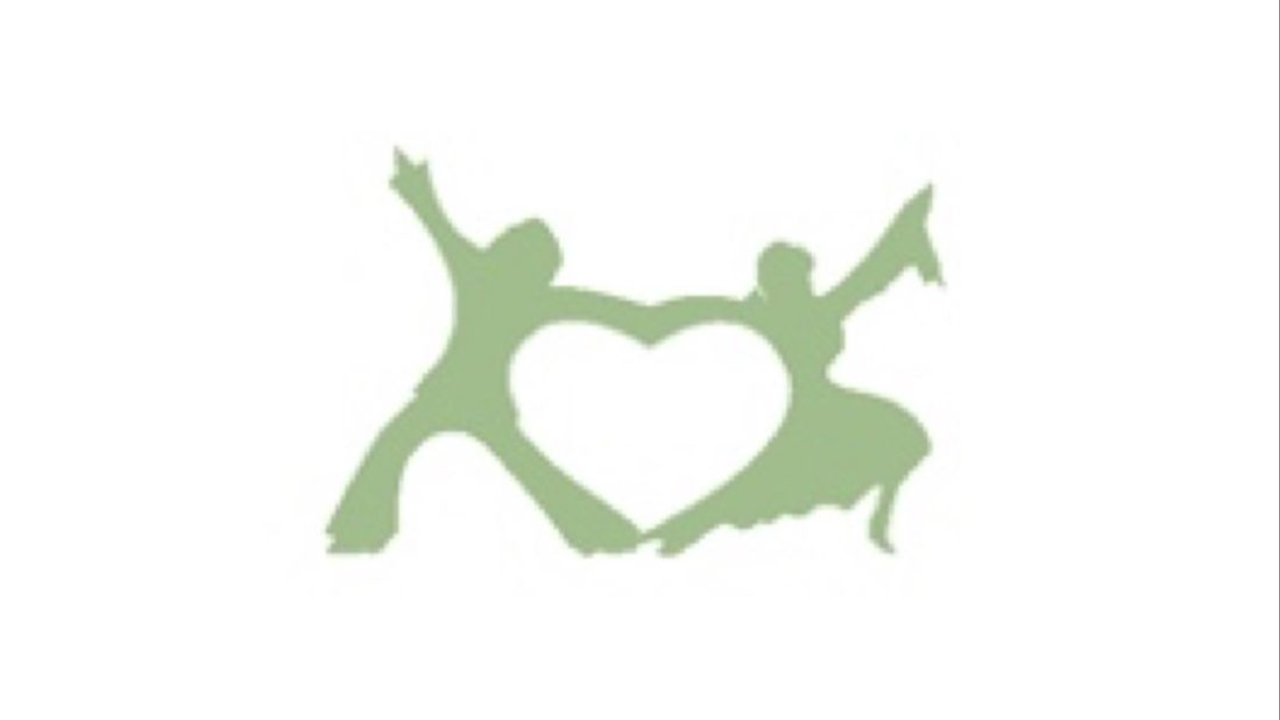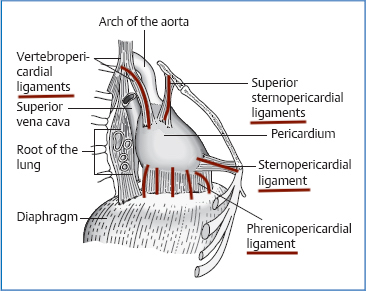Releasing the Heartstrings: A Dancing Heart
Sep 02, 2023
Excerpt from Restorative Anatomy for Self-Regulation by Aubrey Lesicki
You can listen to me reading this and guiding these processes below by following this link: https://vimeo.com/aubreyremedy/dancing-heart?share=copy
This story was inspired by an idiom in the English language that says something has “pulled on my heartstrings” when it has evoked a deep, deep feeling. Most people do not know that there are actual heartstrings - heart ligaments - that can change their tension in response to our emotional stress. This tension can create the feeling of heartache in the chest. Because of the attachment of the ligaments from the bottom of the heart to the top of the diaphragm, there can also be a sensation of tension in the chest that it is hard to breathe. This tension can be triggered by an intense conversation, fear of conflict, shocking news, or a sudden loss. It can also be activated by the memory of a shocking event. Any of these things- even a bad smell- can instantly activate a stress reflex that will pull on these heartstrings. If we are noticing this tightness, what can we do about it?
Start by taking a moment to look at this image of the ligaments supporting the heart. Thank you MusculoskeletalKey.com for curating this lovely image. At the bottom end of the heart, imagine a skirt of ligaments that wraps around it. The hem of this skirt touches the top of the diaphragm beneath it. This is the foundation that keeps the heart in connection with every breath. On the front of the heart there are ligaments to the back of the breastbone. At the back of the heart, there are ligaments connecting to the front of the spine, extending up to the front of the neck bones, behind the throat. These suspend the heart in the chest and counter act the pull of the diaphragm from below. The diaphragm connects to the inside of the lower ribs, which wrap around the heart and lungs like a basket. Let’s appreciate the brilliance of this construction that protects the heart, while allowing it to be in dynamic connection with every breath. Taking a moment to look at this image now on the screen and appreciate this skirt of ligaments below the heart, attaching to the top of the diaphragm. Noticing the ligaments at the front of the heart and the ligaments at the back of the heart.
https://musculoskeletalkey.com/wp-content/uploads/2017/03/9783131504616_c017_f002.jpg

There is a somatic exercise, an Ease Key, that I love to practice called Feel Your Body Breathing. I use it all the time with my clients during bodywork sessions. I place my hands on clients' ribs and ask them to lift my hands with the breath. If I am coaching clients over zoom, I will ask them to place their hands on their ribs and feel how the breath moves the ribs. Many times, clients tell me they feel lighter and more open after this process. What is most amazing to me, though, is that I am not doing any movement or “massage” with my hands. I am only resting the weight of my hands softly on the body and asking the client to breathe. The body makes the shift away from stress and toward restoration and the pain and tension dissolve. The overwhelming feelings start to fade away. If there is still any tension remaining in the body after this, it is smaller and much easier to focus on.
Take a moment to try this now:
Place your hands on your chest, below your collar bones. Inhale comfortably through your nose and feel if your ribs move under your hands. How much do the ribs move? How does the weight of your hands feel on your ribs? (If you can’t breathe through your nose, it is ok to breathe through your mouth, but try to breathe through the nose.)
Now cross your arms and place your hands in your armpits, so your hands are touching the sides of your ribs. Inhale and exhale slowly and notice if your ribs move. You might imagine your ribs coming out of your breastbone like handles on a bucket, that reach around your chest, and connect to your spine in back. Feel these handles lift as you breathe in and lower as you breathe out. If you make a sound, like a yawn or a sigh, can you feel those vibrations in your chest?
Next, place your hands on your lower ribs, above your waist. You can do this by sticking your elbows out to the sides, like chicken wings. If you like, you can flap your wings to air out your armpits. Another option is to cross your arms over your belly and wrap them around your lower ribs to give yourself a hug. I call this position the diaphragm hug because the diaphragm is attached to the inside of these lower ribs. It looks like the dome on top of a mushroom. Gently holding your lower ribs in whichever position is comfortable for you now, inhale and feel if the ribs move under your hands. You can softly squeeze your ribs as you exhale. Does that feel comforting or agitating for you? If you loudly blow your air out through your mouth, how does that feel? Try it a couple times, inhaling and exhaling.
Now that you have tried each of these hand positions on the top, sides, and bottom of the ribs, move your hands to the place that feels the most comfortable for you. Using that position, we are going to thank the heart and the lungs for working so hard for us in every minute of every day. You can thank them out loud and see if you feel any change in the muscles of your chest or shoulders.
“Thank you, heart, thank you, lungs, for working so hard for me every minute of every day.”
Now practice inhaling gratitude and nourishing oxygen for the heart and lungs. I see and feel this as inhaling soft, bright, fluffy clouds of oxygen into my chest. Then exhale tension and inflammation. You might see this as blowing out dark colored clouds of fog or smoke. Repeat that a few times. Inhale gratitude and nourishing oxygen. Exhale tension and inflammation. Notice what changes from this activity. Did the speed of your breath change?
Did the tension in your body shift? Is your posture different? How is your mood? What are your thoughts?
Some people are more visual than kinesthetic, and they appreciate a guided visualization to better engage their monkey minds in this restoration process. I call this visualization “Dancing Heart.” You can imagine this guided visualization while standing, sitting, or lying down.
Placing your hands over your heart, imagine your heart is wearing a long flowing skirt. The hem of this skirt is touching the dance floor beneath, which is your diaphragm. See and feel your heart dancing to your favorite relaxing song. Let the skirt swing with the music. As you inhale the skirt swings in one direction. As you exhale the skirt swings in the other direction. Let your body sway or rock with your heart as it dances. (If you need any musical inspiration, here are some links to songs about the heart that we love.)
https://www.youtube.com/watch?v=Ub3AGl8xFG8 (Abrete Corazon)
https://www.youtube.com/watch?v=qtwvae2NbHY (Song of Your Heart)
Your heart is also wearing a gauzy veil and colorful scarves that float on the breeze of your breath. As the heart sways, this kaleidoscope of scarves gently caress the inside of your ribs and your breastbone. The translucent veil floats up from the top of your heart and reaches back. It brushes against the bones of your spine, between your shoulder blades, and up to the front of the bones in your neck. You can place one of your hands softly on the back of your neck to feel this. Now, breathe in the beauty of the music that your heart is dancing to and breathe out the grace of its gentle rhythm.
Bring your body to rest in a comfortable posture. Relax your hands and arms by your sides or place them in your lap. Notice how your upper body feels now. How are your hands resting? Is there any change in how you are breathing? Thank yourself for taking the time to give your body these moments of restoration. Thank you, body! Know that you have deactivated a stress reflex and interrupted the cycle of inflammation in just a few moments. More than that, your self-regulation is contributing to the feeling of relaxation in the people around you. By being your balanced self, you become the remedy for stress in your community and your family. With practice, you can learn to relax your heartstrings in less than a minute. To learn more about the science and practice of Restorative Anatomy and the Ease Keys, please join one of our upcoming classes by visiting PowerOfEaseKeys.com/calendar
If you have a song about the heart that you love, please post it below and we can make a Dancing Heart playlist together! Thank you for being here and thank you for being the remedy that you are.
~Aubrey Remedy
© 2023, AubreyRemedy.com

